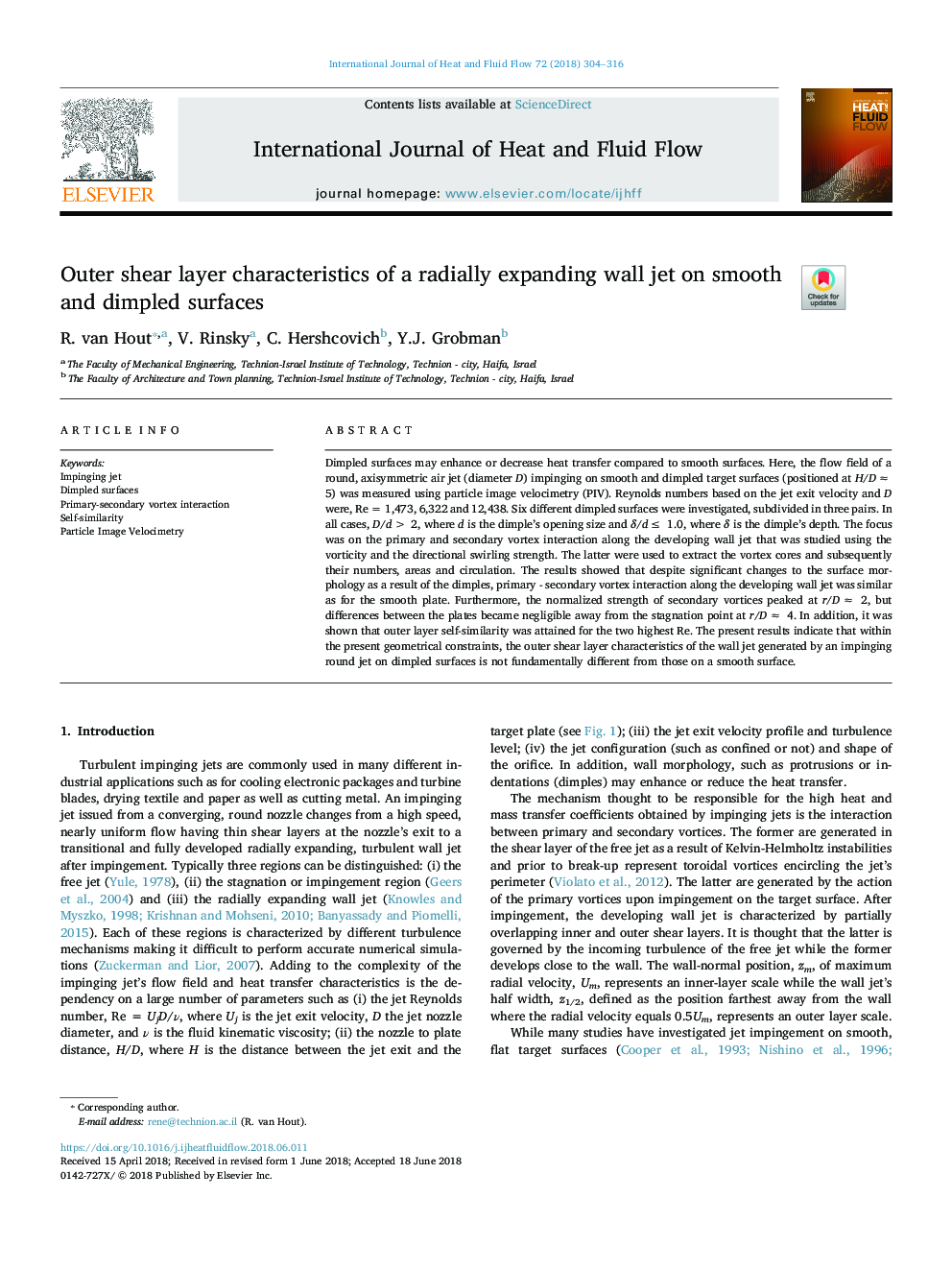| Article ID | Journal | Published Year | Pages | File Type |
|---|---|---|---|---|
| 7053436 | International Journal of Heat and Fluid Flow | 2018 | 13 Pages |
Abstract
Dimpled surfaces may enhance or decrease heat transfer compared to smooth surfaces. Here, the flow field of a round, axisymmetric air jet (diameter D) impinging on smooth and dimpled target surfaces (positioned at H/Dâ¯â⯠5) was measured using particle image velocimetry (PIV). Reynolds numbers based on the jet exit velocity and D were, Re = 1,473, 6,322 and 12,438. Six different dimpled surfaces were investigated, subdivided in three pairs. In all cases, D/dâ¯>⯠2, where d is the dimple's opening size and δ/dâ¯â¤â¯ 1.0, where δ is the dimple's depth. The focus was on the primary and secondary vortex interaction along the developing wall jet that was studied using the vorticity and the directional swirling strength. The latter were used to extract the vortex cores and subsequently their numbers, areas and circulation. The results showed that despite significant changes to the surface morphology as a result of the dimples, primary - secondary vortex interaction along the developing wall jet was similar as for the smooth plate. Furthermore, the normalized strength of secondary vortices peaked at r/Dâ¯â⯠2, but differences between the plates became negligible away from the stagnation point at r/Dâ¯â⯠4. In addition, it was shown that outer layer self-similarity was attained for the two highest Re. The present results indicate that within the present geometrical constraints, the outer shear layer characteristics of the wall jet generated by an impinging round jet on dimpled surfaces is not fundamentally different from those on a smooth surface.
Related Topics
Physical Sciences and Engineering
Chemical Engineering
Fluid Flow and Transfer Processes
Authors
R. van Hout, V. Rinsky, C. Hershcovich, Y.J. Grobman,
